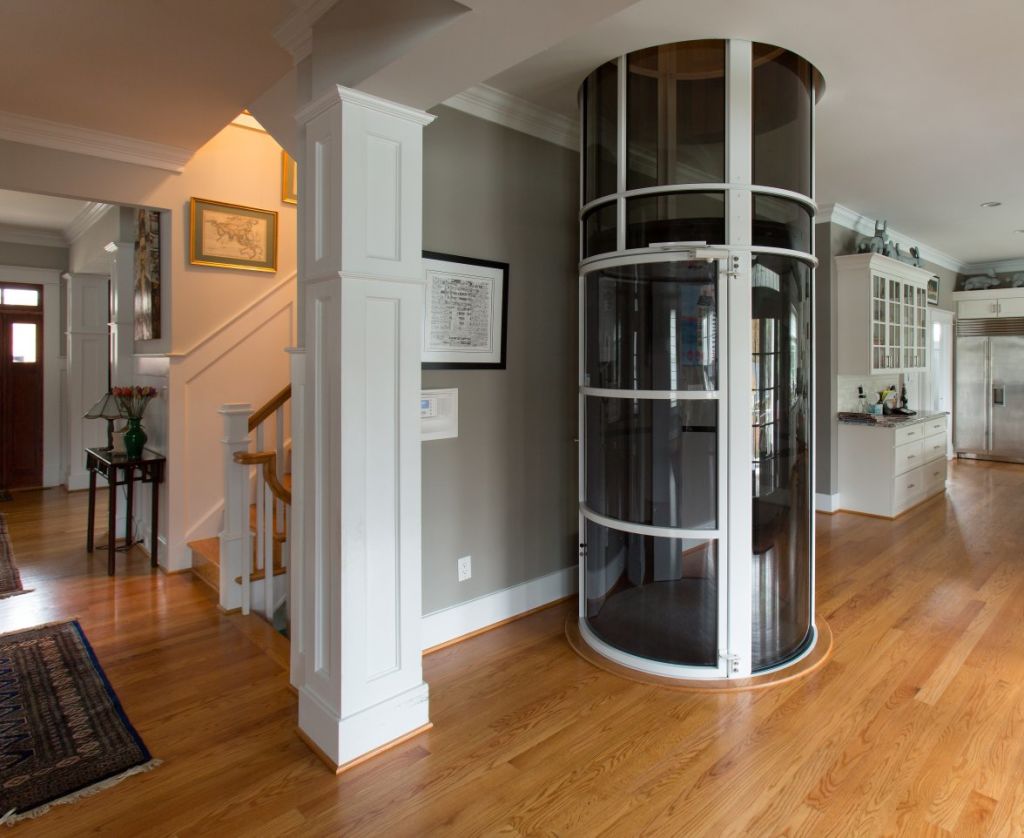Home elevators are an attractive addition to a house. It is a luxurious addition that can maximize the accessibility of the place. The value of the residence also goes up because of an elevator.
Adding an elevator to a home is an ambitious move, but it does pay off. A home elevator is a compartment that connects to a lifting system that offers vertical axis transportation.
Safety Features Of Home Elevators
Home elevators are a cool and luxurious addition to a residence, but to make it a smart addition you must ensure that it is a safe addition as well. Make sure you take a look at the safety features before installing the elevator.
Here are some safety features of a good home life elevator must-have:
Backup Power
Backup power is a crucial feature as it activates several safety features of home elevators. The backup power system is rechargeable, and it has an automatic recharging system that activates when power is available.
Emergency Lowering Device
Getting stuck in an elevator is scary because they are a small and confined space. The residential elevators must have an emergency lowering device powered by a backup battery. It allows people to safely get out by choosing a downward floor. The doors will open when the lift reaches the chosen floor.
Alarm
 The alarm button is present inside the elevator and its purpose is to alert people outside the elevator in case of an emergency.
The alarm button is present inside the elevator and its purpose is to alert people outside the elevator in case of an emergency.
Telephone
A telephone connected to a landline is located inside the modern models of home elevators. It makes it easier to call for help if there is an emergency.
Door Interlocks
The interlocks are installed on all the door entrances. The feature is added to home elevators to stop them unless the hoistway is properly shut and locked and there is no danger of it opening up.
Types of Home Elevators
To find the best home elevator for your place, it is essential to explore the different types available. Some of the types of home elevators are discussed below
Hydraulic Elevators
These are heavy-duty elevators and offer a generous 750 lbs weight capacity. The hydraulic elevators need a full-hoist way enclosure on all the floors, a separate machine room, and a pit on the last floor.
It is a perfect elevator for heavy use. These elevators are reliable, smooth, and ensure a quiet ride.
Winding Drum Elevators
A winding drum elevator uses an electric motor to operate. The motor winds the cable on the drum which results in the lowering and raising of the elevator. It needs a machine room, hoistway, and a pit.
The typical capacity of the winding drum elevators is 500-750lb. A machine room is recommended if you have space because it ensures easy maintenance and service. It is an excellent addition to homes because motor assembly can be placed in different locations while using the machine room. You can route the wire ropes to the drums or the drive using sheaves.
Machine Room-Less Elevators
The controller and drive of the MRL elevators are present in the hoistway, so they do not need a machine room. It is a suitable choice for houses that do not have any space for the machine room and are looking for an elevator that can serve about five landings. These elevators are available in cable drive systems and electric chain drive.
The machine room-less home elevators offer a reduced footprint. It provides better protection of control equipment in places that have a high chance of flooding. It prevents water damage.
Shaftless Elevators
Shaftless or through-floor elevators serve two floors. It can easily retrofit into the design of existing homes. These elevators need little space as compared to traditional elevators.
A shaftless elevator does not need a separate machine room, full hoist-way enclosure, and a pit, so the construction required for installation is minimum. It is a perfect elevator for houses that have limited space and are looking for simplicity and convenience.
Vacuum Elevators
The air-driven elevators move by using air pressure. There are three models of the elevator available; PVE52, PVE30, and PVE37. The number represents the external size of the lift. The cylinder of the PVE30 is 30 inches. It has the smallest footprint among the available models.
Installation does not require too much construction or a machine room or a pit. These elevators can serve up to five landings and offer 50 inches of maximum travel.
Conclusion
Installing a home elevator is not a small decision. If you choose to install an elevator, make sure it has all the essential safety features so you can enjoy the luxury and comfort it has to offer.












